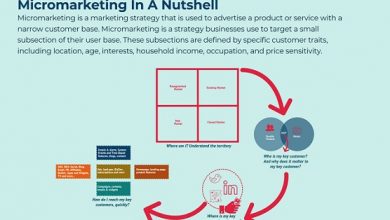What is hybrid work model its advantages and implementation and examples
What is the hybrid working model?
Here we will elaborate you the information about the hybrid work model its advantages and implementation.
There are already companies that do not have a physical space and their contractors can work from anywhere in the world, as long as they have internet access and are able to organize themselves according to the demands required by the business.
However, it is a fact that some professionals do not like to work only at home, as the lack of structure can make it difficult to carry out the work. Also, the lack of contact with other people can be a negative factor.
The hybrid work model is basically one that mixes the face-to-face format with the home office . Thus, the company ensures that employees have the flexibility to choose where to work on a given day, without having to physically be at the office.
In addition, if the presence of certain professionals is required at certain times, it is possible to schedule the hours of each one, defining in advance when they will be able to work at home and when they will need to go to the workplace.
Finally, for organizations that cannot only work remotely, hybrid work emerges as an interesting alternative, capable of benefiting both employers and employees.
hybrid work model characteristics
A hybrid work model is mainly characterized by the following elements:
-
Use of technology . One of the main characteristics of hybrid work models is the implementation of several digital tools that speed up and facilitate the performance of different tasks remotely. Most commonly, companies that opt for a hybrid work model provide their employees with the necessary tools and equipment to carry out the functions of their position. These tools include, of course, any type of specialized software used by the company on a daily basis. In this sense, tools that facilitate aspects such as the control of working hours , the management of documents and files and internal communication between the different departments should not be missing.
-
Complementation of work modalities . As its name indicates, a hybrid work model is designed from the complementation of the in-person work modality and remote work . In this way, whoever carries out their work activity under this hybrid typology must be able to perform any of its tasks in any of these modalities. In other words, employees must have the necessary resources to carry out any of their tasks both from the company office and from home.
-
Flexibility . This is another of the highlights of this type of work models. They are systems that require flexible planning that allows employees to obtain a better balance between their personal and work lives. This flexibility must be present both in company policies and in the systems used for workers to carry out their tasks remotely. In other words, different technological solutions and devices must be able to adapt to workers’ preferences and their workplace.
-
Inclusivity . A hybrid work model must be inclusive. This means that the company must offer the same opportunities and rights to all workers, regardless of the number of hours they work remotely or from the office. For example, it is essential that all communication reaches all workers in the same way and that all employees have the necessary resources and systems to communicate their opinion.
-
Specific management and administration . Of course, hybrid work requires specialized management and administration, since this modality presents many differences with respect to the traditional work model. It is necessary to have the appropriate tools, the advice of Human Resources specialists who know all the details of what hybrid work entails, and an effective internal communication system.
The main advantages
Let’s get to know the main benefits of the hybrid work model?
1-reduced costs
As the number of employees who go to the company on a daily basis is lower, expenses with the maintenance of the place are drastically reduced, for example, energy, water, internet, rent, equipment, transportation vouchers, etc.
Also, depending on the size of the team, there is the possibility of renting co working spaces, with more affordable prices, only when it is necessary to bring the team together.
2-Lower turnover
When professionals do not have the obligation to go to the company in person simply to meet a schedule, they feel more valued in their positions and tend to stay longer in the function. In addition, employees and candidates now have a better perception of the brand.
3-Convenience
The possibility of working from home during certain periods is, without a doubt, very convenient for those who have a good structure to do the home office. That’s because the person doesn’t have to move and can do everything they need on the internet.
4-save time
Since the employee does not need to waste hours in traffic every day, the hybrid work model allows them to better manage how they will spend their time, which brings benefits to the employee’s health.
Thus, in addition to being more productive in the service, professionals are able to take advantage of their free time to dedicate themselves to activities that are good for them and have more contact with family and friends.
Disadvantages of hybrid work
Like any system, hybrid work also has some drawbacks:
-
It represents a significant investment , since it requires the use of different digital tools and devices.
-
If you do not properly track different tasks and work hours, efficiency could be reduced . This can be solved by keeping an adequate record of working hours using specialized software and carrying out employee performance evaluations .
-
It requires specialized knowledge of the different digital tools needed to implement a hybrid work model effectively.
-
It can hinder teamwork and make it difficult to maintain contact with colleagues.
How to implement hybrid work model?
It is common to face difficulties in implementing hybrid work, especially when home office is not a usual practice in the company. Therefore, before carrying out the complete implementation, it is essential that there is a good planning of how the tasks will be carried out .
Therefore, try to use digital tools to your advantage, in order to apply technologies that can optimize the work. Today, we rely on platforms to facilitate communication, manage time and organize the progress of projects.
But as the organizational culture can be harmed if there is not a good interaction, it is a good idea to promote actions that integrate the team and make everyone feel part of the company. Also, when making the staggers, avoid leaving someone working in the home office for many days in a row.
To ensure that there are no problems with file storage and sharing or security issues, the ideal is to hire a cloud storage service with data protection so that everyone has access to the work and nothing is lost in the process .
Finally, we must not forget that, in some cases, it is the company that is responsible for the equipment that will be used by the employee, although many contracts still establish that the contractor must bear the expenses at home.
1-Care to be taken and good practices
In relation to people management, it is necessary to be extra careful so that leaders are able to motivate the team inside and outside the company. In this sense, the use of digital means of communication helps a lot.
If managers do not actively participate in online tools, for example, the chances that employees will not engage and even reject the use of the chosen channels are enormous. Therefore, it is necessary to influence people even from a distance.
Another point that deserves attention is monitoring the progress of tasks. Hybrid work is not synonymous with complete freedom to carry out projects. In fact, some organizations choose to use software that digitally control the time and even measure how many hours the professional dedicates to each activity.
A practice that has been adopted is to let employees themselves decide when they want to work in person and if they really want to do it, so that they can choose to stay at home if they have a better performance with the remote system.
Examples of companies that have successfully implemented hybrid work
Since the start of the pandemic, many companies around the world, both large and small, have implemented hybrid work. These are some examples.
1-Microsoft
After implementing remote work as a result of the start of the pandemic, the Microsoft company realized the multiple advantages that this model offered. For this reason, Microsoft chose to implement a hybrid work model that offers flexibility to its workers. The company uses a system to measure worker performance .
2-Dropbox
After conducting a survey to find out their workers’ opinions regarding hybrid work, the company Dropbox realized that almost 90% of its employees felt that they worked as effectively at home as they did in the office. The company decided to opt for a hybrid model that, on the one hand, provides flexibility and contributes to employee motivation and, on the other, benefits communication between colleagues.
3-HubSpot
HubSpot is aware of the importance of active listening , which is why the company decided to implement a work model that adapts to the preferences of its workers. Depending on their personal and professional situation, employees can choose whether they prefer to attend the office one or two days a week, two days on average, or three or more days. HubSpot prioritizes employee opinions, which is beneficial for their experience and professional satisfaction and contributes to creating a better work environment .
4-Personio
At Personio we have the PersonioFlex hybrid work model , which takes into account both our company culture and the well-being of our employees . Our model is based on three options: hybrid work, with attendance at our offices of around 50% of the working day; remote work and international remote work. While we encourage our workers to come to the office whenever possible, we also offer them the ability to work from home if they prefer.




